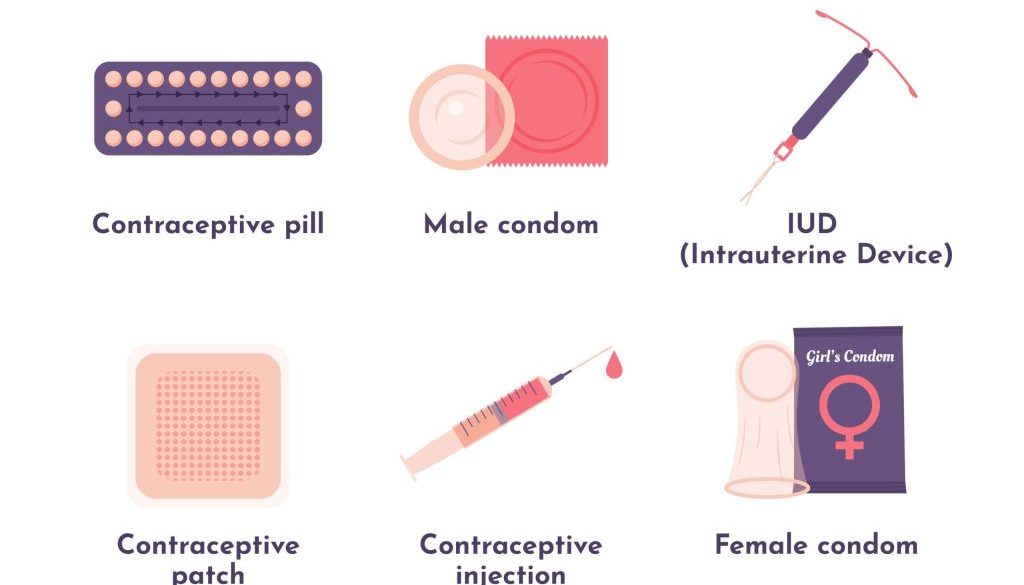The Power of Options: A Comprehensive Guide to Contraceptive Methods

Last updated on April 3rd, 2025 at 02:25 pm
September 26 is World Contraception Day. World Contraception Day was launched in 2007 with the aim of raising awareness and knowledge about safe and effective contraceptive choices among youth and adults.
Hence, it focuses on ensuring that men and women of reproductive age groups are informed and aware of the various contraception methods. It also empowers them to use safe and effective means of contraception.
Moreover, every couple should enjoy the right to decide when to have their pregnancy planned and the birth spacing between their children.
What are Contraceptive Devices?
Those devices that prevent unwanted pregnancies during the physical relationship between couples are known as contraceptive devices.
Couples intentionally use devices to avoid conception during coitus There exist multiple contraceptive methods with their own characteristics, advantages, and disadvantages.
These methods of contraception include the following:
Reversible Contraceptive Methods:
- Levonorgestrel Intrauterine System (LNG IUD):
A T-shaped device is inserted inside the uterus of a woman. A trained health personnel or a doctor performs this procedure. This device releases progestin hormone, which prevents pregnancy. A single device can last for up to 8 years with a failure rate of 0.1%–0.4%. - Copper T (IUD):
A copper IUD is also a T-shaped device that is inserted inside the uterus. It can last up to 10 years, with a failure rate of 0.8%.
Hormonal Methods:
- Implant:
A thin rod-like device is inserted inside the skin in either of the upper arms of women. It contains a hormone named progestin and lasts for up to 3 years. The failure rate of this device is 0.1%. - Injection/Shot (Depo-povera):
It is an injection having the hormone called progestin. This injection lasts for only 3 months and should be repeated every 3 months. The failure rate of this method is 4%. - Combined Oral Contraception:
This method is commonly known as pills. It contains both progestin and estrogen. Doctors prescribe the pill and one should not take it over the counter. It should be taken every day at the same time. The failure rate is 7%. - Progestin Pill Only:
This method is similar to that of combined oral contraception but only contains progestin as a hormone to prevent pregnancy. The failure rate of this method is 7%. - Patch:
Patch is another method in which a hormone-releasing patch is worn on the skin of women. It is worn on the lower abdomen or buttocks, but not around the breast. It is worn for 3 weeks, with one patch each week, and to be repeated again after the 4th week (menstruation period). The failure rate of this method is 7%. - Hormonal Vaginal Contraceptive Pills:
This is a ring-shaped device that is inserted inside the vagina. This ring consists of hormones named progestin and estrogen. It should be kept for 3 weeks and taken out on the 4th week for the menstruation. The failure rate is 7%.
Barrier Methods:
- Diaphragm (Cervical Cap):
Diaphragm is a U-shaped device that is inserted inside the vagina. It blocks the sperms from entering the cervix or to kill the sperm with the spermicide chemical present in the device. The failure rate is 17%. - Sponge:
It is similar to that of a diaphragm. However, it lasts for up to 24 hours, and leave it for up to 6 hours in the vagina after the last intercourse. The failure rate of this method ranges from 14% to 27%. - Male Condom:
It is one of the most commonly used barrier methods for conception. Only males use this device as contraception. The condom is used only once and also provides protection against HIV and other similar STDs. The failure rate is 13%. - Female Condom:
This device gets inserted inside the vagina, covering or blocking sperm from entering the cervix. Only females use this device for contraception. It also prevents from STDs. It can be worn up to 8 hours before sexual intercourse. The failure rate is 21%. - Spermicides:
This method consists of a tablet, foam, cream, or gel-like chemical. It is inserted inside the vagina not more than one hour before the physical intercourse. It is kept for up to 8 hours after the intercourse. The failure rate is 21%.
Lactational Amenorrhea Methods:
In this method, a lactating mother naturally releases hormones that prevent pregnancy. This method can only work with 3 criteria:
- Absence of menstruation after their delivery.
- Fully breastfeeding
- Less than 6 months after delivery
Fertility Awareness-Based Contraceptive Methods:
In this method, a woman tracks her period cycle and skips her sexual intercourse at the time of ovulation i.e. 14th day from the start of the period or 14 days before the start of their next expected date of menstruation. The failure rate is 21%.
Emergency Contraception:
- Copper IUD: This device is a reversible contraceptive method and is also used as an emergency pill when it gets inserted within 5 days of unprotected sexual intercourse.
- Emergency Contraceptive Pills: Emergency pills can be taken 5 days after unprotected sexual intercourse. However, the sooner you take emergency pills, the greater their effectiveness.
Permanent Methods of Birth Control:
- Female Sterilization: This method is a permanent method in which a female can have her fallopian tubes closed or tied to prevent the sperm from meeting the egg. It requires minor surgery. The failure rate is 0.5%.
- Male Sterilization (Vasectomy): This method is a permanent method of contraception in which a man undergoes a minor surgery to prevent his sperm from entering their penis. Their sperm count on ejaculation will be reduced to zero by 12 weeks of the surgery. The failure rate is 0.15%.
Conclusion
Before conception, one should plan every pregnancy adequately. Unwanted pregnancies can cause pregnant women physical, mental, and emotional distress, as well as fetal defects.
There are numerous contraceptive devices available to help prevent unwanted pregnancies. So, all couples must be educated about modern contraceptive devices.
Each item is not equally effective, but the lower the failure rate, the more effective the product.
Hence, choosing which contraceptive devices to use is totally up to the individual, but they must be chosen wisely.


